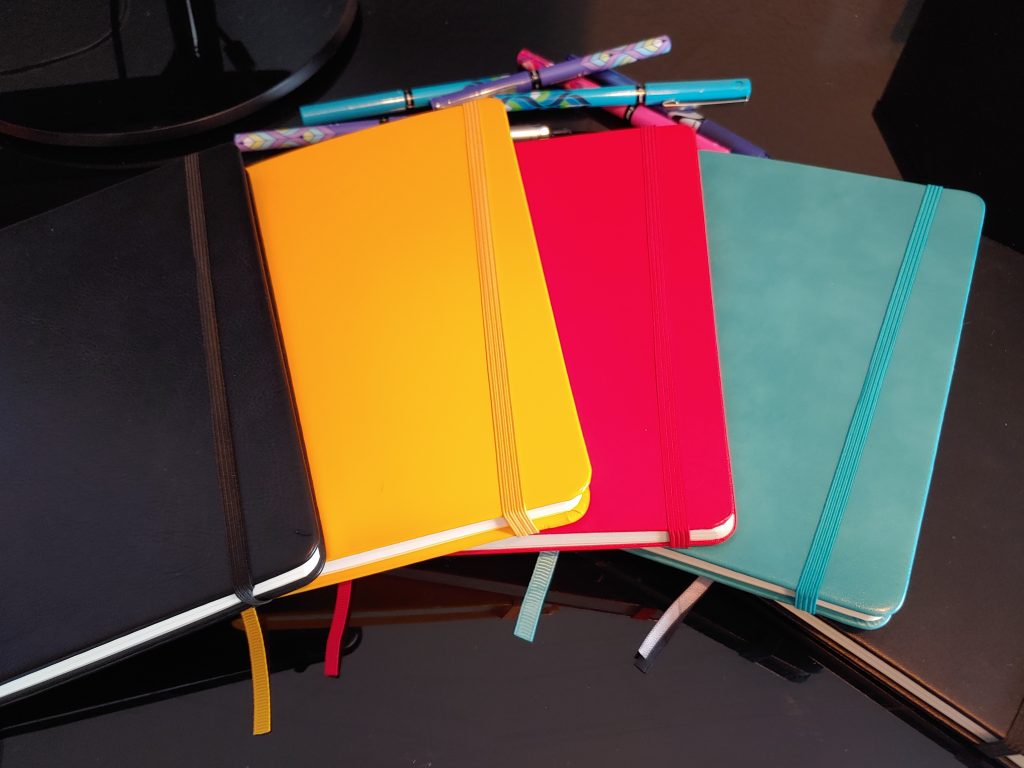You Need A Budget Review – Good Individually, Okay For Side Hustle

Late last year, I finally decided to move away from my Excel based budgeting and into an online, mobile app supported program. After reviewing the options (discussed here), I settled on You Need a Budget, or YNAB for short. After using it for around nine months, I decided now was a good time to dive a little deeper into my thoughts, and see how my initial impressions have held up.
An Introduction
When I first starting using YNAB, I had a panic attack.
Every other budgeting program I’ve used looks at a month by month analysis. For example, if I get paid $5,000 a month and my expenses are $5,000 a month, I’m fine. Depending on my pay schedule, sometimes those expenses came before the paycheck, but who cares if it all nets out?
YNAB works differently. While the budget planning is shown on a month by month basis, all the planning is based on the money ACTUALLY IN YOUR ACCOUNT. We’re talking paycheck to paycheck, rather than one (approximate) trip of the moon around the Earth.
Why does this distinction matter? Because the mortgage payment comes at the 1st of the month related to paychecks that come every other Friday…which may be after the mortgage is due.
With the way I manage my finances, this hasn’t been a problem. I buy basically everything on a travel points credit card then pay the balance in full each month. But YNAB shined a spotlight on an issue: I am technically buying stuff with money I don’t have.
In salaried positions with regular paychecks, this isn’t that big a deal. I can keep muddling along with my standard budgeting and my 8 to 5 constantly available plus whatever other time outside of that job.
Or I could continue using YNAB and get that fixed. Which could also help me plan better for a life outside of the corporate race.
My Budget Now
I’m happy to say that using YNAB has gotten that problem back on track. Even better, the mobile app has done exactly what I was hoping: given a real time glance for both my wife and I to figure out how much money we really have.
We haven’t been as good as I was hoping we would be at entering every little expense (we did a great job before we went to Disney World, which also led to one minor freakout over whether we could get a $40 shirt), but despite that, the updates and the notifications, along with forcing us to reconcile everything as the money comes in has made our money situation feel much more comfortable than it ever was before.
It is infinitely better than the weekly dread sessions when I would reconcile our many accounts with Excel and see if there was anything left.
In other words, I like this product, and I plan to keep using it for the foreseeable future. The subscription cost is worth it, even when there’s plenty of other free options in the world. Yes, that especially includes Mint, which I hate.
Key Features
Budgeting Method
As I mentioned above, the main benefit of YNAB is that it forces you to look at your money as it comes in. Each dollar needs to go to some use, and money that isn’t there isn’t used without very obviously creating credit card debt.
This is a much more healthy way to budget. The month budgeting was always very arbitrary. It should be when you get money, you should figure out how it’s going to be used. Anything other than that, and it’s more wishful thinking than basing your financial goals on facts.
(Okay, not COMPLTELY true, but that income does need to be fixed and determinable, as we say in the tax world)
Support
As I mentioned in my original summary, YNAB has a robust community. They also have a responsive support team, as I discovered when I ran into technical problems and got good answers in a reasonable time frame.
In my case, I was having a lot of problems getting YNAB to connect with one of my cards. After reviewing the YNAB community, this was a known issue. But after talking with the support staff, they found a way to make it work, and it hasn’t been a problem going forward.
Even better, they later updated their connection methods that made all of my connections go faster.
That doesn’t mean that I don’t have problems from time to time with my connections. But they’ve never lasted long. And I have more accounts than I like to admit to.
Linking Expenses
For the life of me, I don’t understand why no other budget program have YNAB’s linking feature.
If I have an expense, the best way to handle it is to enter it right away into my budget. That way my budget is always up-to-date.
If, instead, I rely on programs like Mint to pull the credit card statements, I’ll eventually get the right answer, but it’ll be delayed by a few days. How am I supposed to know if I can buy something on Monday if my budget doesn’t include last Friday’s night out until next Wednesday?
YNAB comes up with a perfect compromise. You enter in the expenses as they happen. Then, when it pulls the credit card statements, it will automatically link the expenses you entered with the expenses in the card.
And if you forget to enter an expense, no worries! It’ll pull the missed expense just like the other budgeting programs do.
This is especially helpful when you buy something that takes forever to show up. Like when I bought an Xbox Series X at Walmart and it took a full month to charge me and ship. If I just used the Mint method, I would have thought I had $520 more dollars than I actually did.
This does, unfortunately, sometimes cause minor problems. Like if I fat finger an expense, it’ll give me a minor stomachache when YNAB can’t link up an expense and instead shows that I’ve spent twice as much on something compared to what I’ve actually done. But these differences will stick out with just a bit of effort. And they should absolutely scream when you do a Reconciliation.
Reconciliation
YNAB offers a nice button in the web version to reconcile what they have for each account with what your bank/credit card/etc. is showing. This button is genius. This should be required of any budgeting program. It makes it so I know that what’s actually in my budget is what the bank is showing. And using it has revealed problems over time. I mentioned the double charge issue above, which I most likely would have spotted in another budgeting program. But using the reconciliation also made it very clear when a charity HADN’T charged me, something that I almost certainly wouldn’t have spotted without a good reconciliation.
Mobile App Support
The mobile app is pretty good. I get annoyed with it from time to time, since it doesn’t have all the complex function the website has. Which is understandable, but can be a little annoying.
The app also loves to throw it in my face when I’ve gone over budget in a category. Yes, I definitely need that from time to time. But sometimes it can seem a very incessant “FIX THIS ISSUE NOW!”
But the important part is that I can load it up, get a good snapshot of my situation before I buy something, then enter in that expense right away when I do.
YNAB recently made some pretty big modifications to the app, a lot of which are naming conventions to make the purpose of various items more clear. Like they previously used “budget” something like three times before all to mean different things. The old version never bothered me, but the new version is generally cleaner.
Also, most importantly, the app has wide ranging device support, and communicates from all those devices to the cloud so everyone (by which I mean me and my wife) are on the same page. This seems like it should be fairly standard in this day an age, but, unfortunately, there are still quite a few budgeting apps that will only do things locally.
With the wide ranging device support, I’ve only tried Android and Apple, but there’s others if that’s what floats your boat. For example, there’s Apple Watch support, which could be helpful if you have one of those on your wrist. There’s also Alexa support, which is dumb, since everyone knows Alexa is only for turning off my lights when I’m in bed and forgot that one downstairs and am just too lazy to get up.
Potential Issues
Even with all the good things said above, there’s a couple issues I’ve come across that bother me. Nothing that’s a deal breaker, but definitely something to keep in mind.
No Real Upcoming Expense Reminder
My Excel budget has a nice list at the bottom of each month showing my recurring expenses with an approximate due date. When I pay them, I add in a “paid date.” Then I have a very clear snapshot of what’s paid and what’s due during the month.
Mint has a feature built into it that does something similar. You put in your monthly expenses, and it’ll give you a reminder of when to pay it. I think you can mark the expense off when you pay it, but I could be making that part up and don’t currently feel like touching that program to double check (I don’t like encouraging them to email me more).
YNAB…doesn’t really have anything. Their website recommends putting the due date next to the expense (for example, rather than “Water,” put “Water – Due the 24th”). Maybe this works for some people, but I tried it…I didn’t like it. No good snapshot of what’s coming up. At least a couple of steps to figure out if it’s been paid.
I would really love if this was more robust. Instead, I need to keep a separate tracker to make sure my expenses were paid each month.
Long Term Budgeting
I’m a little torn on the long term budgeting feature in YNAB. It mostly work: you put in the long term goal, and it tells you how much to contribute each month to get to your goal.
This is great if you have a regular paycheck and want to contribute the same amount every month. Otherwise, it potentially shows a lot of yellow (meaning “underfunded”)
Here’s where I had issues. My wife is going to graduate school. Tuition is (surprise, surprise) not cheap. We set aside a certain amount each month to pay for it, but were also planning to use a significant portion of my then upcoming bonus to cover it. I had two ways to handle this: either lower the tuition goal to not include the bonus to give me an accurate look at what I want to contribute each month, or have the goal include the bonus, but then having the program tell me to contribute more each month than I could afford.
It ended up being a bit wonky. It would have been nice to have a “future lump sum” option. Though the programming on that is probably not worth it to the few YNABers who would use the feature. I could have also set up a separate budget to handle the bonus, but that seemed a little silly since it was all for the same goal.
The Price
Look, YNAB really isn’t that much in the grand scheme of things. Right now either $11.99 a month or $84 a year, which is a steep yearly discount compared to most subscription services.
Still, paying money on a budgeting app seems kinda lame when you can just sell out your personal information and get bombarded with ads to get one instead.
I’m only kinda kidding here. I’m all for free, even if free means some of the real estate goes to trying to sell me on something else.
When I’ve found, though, is that you really do get what you pay for. YNAB may cost more, but it’s more likely to help you actually budget, too.
Business Use – Maybe in a Side Hustle
All of the information above is about using YNAB as a personal budget planner. That’s what it’s supposed to handle, and it does it pretty well.
While I was researching budgeting ideas, one person suggested using YNAB as a business budgeting tool. Out of curiosity, I decided to give that a try.
And it works…to an extent. YNAB can handle your business if you have a side hustle. If you’re getting much bigger than that, you should probably find something more powerful.
I might turn this section into a whole post in the future, but in general, you’d want to make sure that all the money coming in for your business/side hustle is coded to an “Income” budget line, rather than going through the standard “Money to Assign” area at the top. You’d then have to reallocate it from there to cover your business expenses.
This extra step will save your life at year end, when you could then download your transactions and fairly easily put together financial statements (for your taxes if nothing else).
I can also see how using YNAB in a business could easily get away from me if there’s more than a handful of transactions a month.
In other words, sure, it can work. Just be careful.
Takeaway
As I mentioned at the start, this budgeting program has a learning curve, even for those who have been budgeting for years. Once you get past that learning curve, it is a very good budgeting program that can help you rethink your money and keep your budgeting goals on track.
The powerful proactive features make this program a fantastic option for those on top of entering their expenses, and does a great job catching ones that you might miss. Like any budget planner, it will work best if you are proactive in managing the ins and outs compared to what you actually have in your account.
It can also potentially be used as a business budget planner…but only to a small extent. If your budget is much more than a side hustle, you will really want to invest in something more than YNAB.
YNAB certainly costs more than Mint…but I’ve found that it’s absolutely worth the difference.
Image by Steve Buissinne from Pixabay





